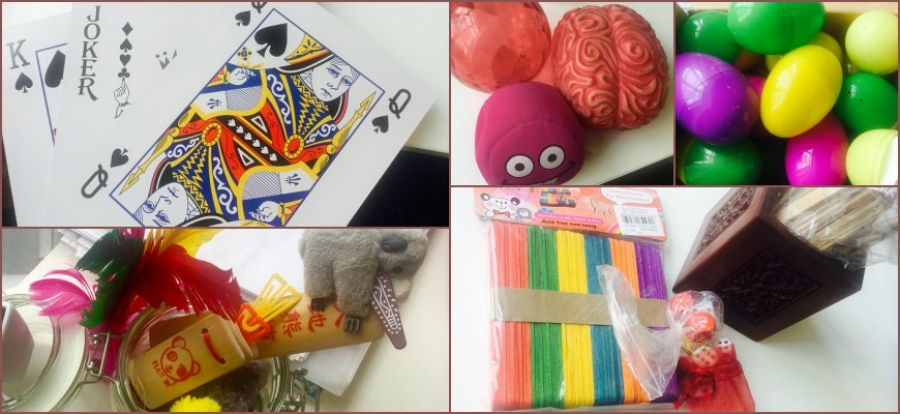- “We like to create our own work and make fact files. We like our lessons to be based upon real life.”
- “We don’t need anything too fancy. We just like to be asked what we would like to learn and how we would like to learn it. We like our ideas to be listened to because this makes us feel confident and included.”
- “We like to work in small groups sometimes because it is less intimidating to try out new ideas.”
- “I find practical activities make me feel more enthusiastic and help me to remember stuff better.”
- “I love Kahoot and playing games because you remember what you learn and it is fun.”
- “I like to feel that the teacher is a real person. They start the class asking about my day, and then they know that humour and variety in a lesson helps us to change our focus and allow us a little bit of space. If the teacher is lively and interested, I find the lessons more lively and interesting and I feel more confident.”
- “Once, we went outside and acted out some of the concepts we had learned in Science. It was such fun and made us really think!”
- “We were allowed to draw planets on the ground outside. I loved learning in a different way. It was quite cool!”
Every learner, including teachers (because we are all learners), will have their own perception of how teaching and learning can be brought to life. Just as there is no-one-size-fits-all learner, there is no-one-size-fits-all educator.
However, in acknowledging the value of education, its potential for making a difference to learners and the passion and enthusiasm required to facilitate enjoyable, challenging learning, educators are usually singing from the same hymn sheet. There is no greater reward in education than inspiring and enthusing learners. In fact, to inspire literally means to breathe life into a situation. By breathing life into learning, we are literally bringing it alive. We have the capacity to adapt and modify how we do things, to create new shapes from the old ones, to colour outside of the lines. Yet we also need the will to do so, the opportunity to look deeply at our practice, to listen to our learners, to feel safe in trying new things and to deviate from rigidity of systems which may make us feel restricted or straightjacketed into teaching a certain way. We need to have that spark of teacher non-conformity where the stage is ever evolving and where our own learning is organic. That is where the magic happens and this is how we can create that magic.
Reflecting upon my own experiences and learner responses mentioned above, it may be helpful to consider the following magic ingredients for effectively (and perhaps unconventionally) bringing teaching and learning to life, starting with ourselves. Here are some ideas for shaking things up:
1. Develop and maintain a healthy dose of curiosity: Adopt an enquiring stance.
In order to really find out the most effective means of engaging and positively impacting learners, it is important to adopt an enquiring stance to what we do and why we do it. This involves ongoing critical reflection to challenge our assumptions and to generate useful, real evidence from the contexts in which we work. It involves listening carefully to learners as individuals, observing learners and monitoring output, discussion with colleagues or a critical friend, analysis, and using evidence to inform our own learning and future practice. Otherwise, how can we know, deeply know, that the way we are teaching is creative, engaging or inclusive and how can we truly begin to understand our learners and our impact upon them?
2. Cast your spells wisely: Choice.
Taking the time to get to know a class as individuals is not only conducive to establishing positive relationships, but also reveals invaluable information about their interests and what is important to them. This may provide a steer as to the content or context of learning experiences and to the choices learners could be given within a context.
3. Add some spice: Variety.
Vary activities and learner experiences. Use games to engage and involve learners, some might include technology and apps for games or making movies or recording voice, some might be imagination tasks and problem solving tasks.
4. Keep content relevant: Their lives, their communities and the wider world.
The UNDP’s goals for sustainable development can be a very relevant, current way to plan a curriculum for different stages and across all subject areas. Nurture their curiosity and invite them to share ideas and to inquire.
![]()
5. Cocktail their learning: Transdisciplinary experiences.
See your own subject or particular area of expertise in context with other areas of the curriculum. What can you combine? It could be Science and Modern Languages, it could be outdoor learning, Literacy, Numeracy and Art & Design, or it could be Expressive Arts and Social Sciences. Involve learners in the co-creation of their learning experiences. If you are the magician, they are your apprentices. They can also teach each other.
6. Question Eggs, lolly sticks, dice.
These plastic eggs are an excellent way to start discussion or to consolidate learning. You can have separate topic areas or main points / tasks to do with the lesson in each one, or allow learners to try to find out who has the answer to the question in their egg. They are great for revisiting a previous lesson or using as part of a plenary session. There are many uses for them.
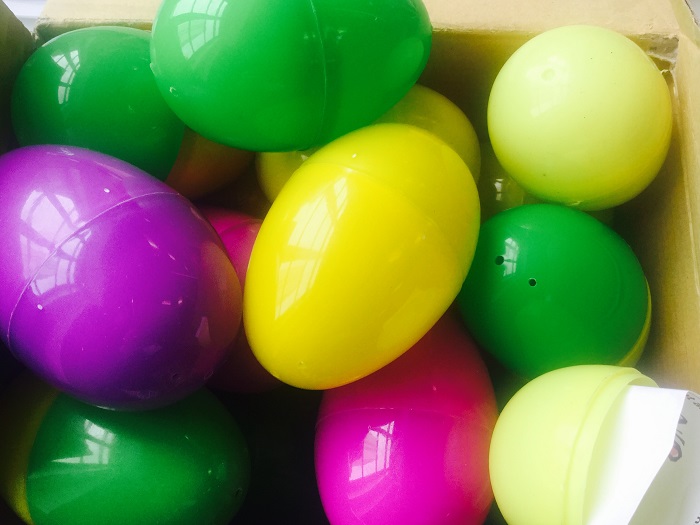
Lolly sticks are excellent for selecting names, questions or tasks at random. Learners can also use these in peer teaching by creating their own tasks or questions for each other. The dice are a quick, easy (can be noisy but productive!) way to allow for random tasks or explanations relating to their learning or what they feel they have learned or understood in your lesson. Each number they throw is matched to a task or idea about the topic or their learning (generally that day), and displayed on a screen in the room.
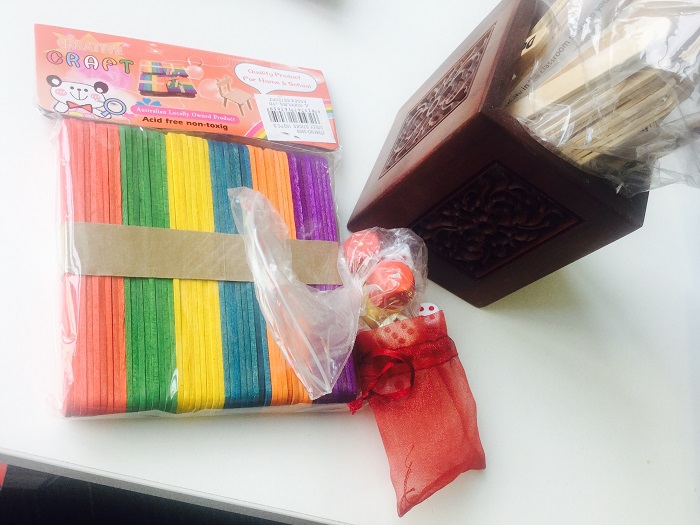
7. Giant and miniature playing cards.
Because they are plastic-coated, my playing cards can be used with different classes for different tasks. The class can have access to a list of questions or activities related to their learning which matches every card in a pack. Learners can select a card at random from the pile and try to win the point. With giant cards, this can be a whole-class starter activity or a group competition at the end of class. Gradually, you can build up many sets of topic areas for the pack of cards, and use them as revision or with future learners. Learners can also create their own questions or tasks and let different groups try them. Small packs of cards can be used if you want lots of smaller groups to try the game for different topics.

8. Balls.
I have used throwing beanbags or balls many times in the classroom for a range of quick, easy learning games. Once the class is used to getting into a large circle with you or another learner in the middle, you can have smaller groups playing the game. One person in the middle calls the question then quickly swaps with the person who answers.
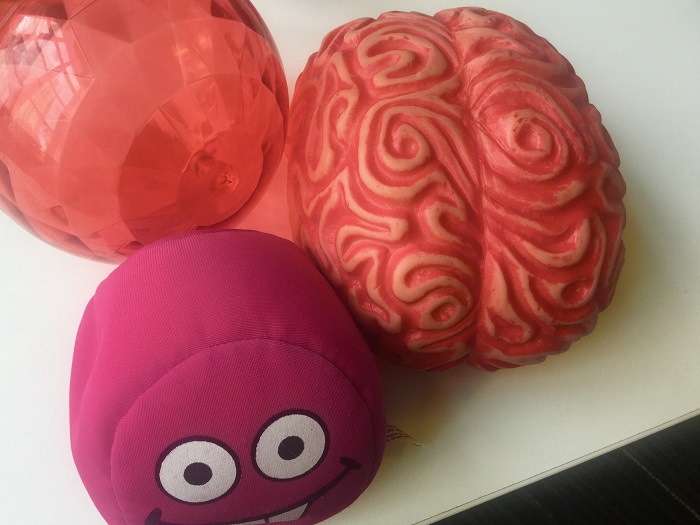
9. Music: Mix-freeze-pair.
Music is a fantastic way to relax learning or to inject a bit of energy and movement into a class. I often facilitate mix-freeze-pair, which is one of many superb cooperative learning activities. Get the class walking around the room (even in limited space this works well if you set the ground rules) and choose a good song. When the music stops, they have to pair up and say something they have learned, answer a question or recall a fact or point of learning from the last lesson. When the music starts again, they must move again and form a different pair next time – not friendship pairs only!
10. Sum up your learning.
During the plenary or at the end of the class, I have often used a box of very random objects to allow learners to select and explain which one best represents their learning that day. This is fun, gets them thinking abstractly, and allows them to explain their own thinking. It really can be any object you have lying around, and a small box is easy to store and pull out of a cupboard / from under a desk. It is amazing what they can come up with, and is an education for the teacher as much as the learner. This can also be done with pictures on a screen, post-it notes, or song choices. Pupils can even draw their understanding on a Show-me Board. However, learners of all ages seem to like colourful, tactile objects, and this usually provides the most fun and inspires more questions from those around them.
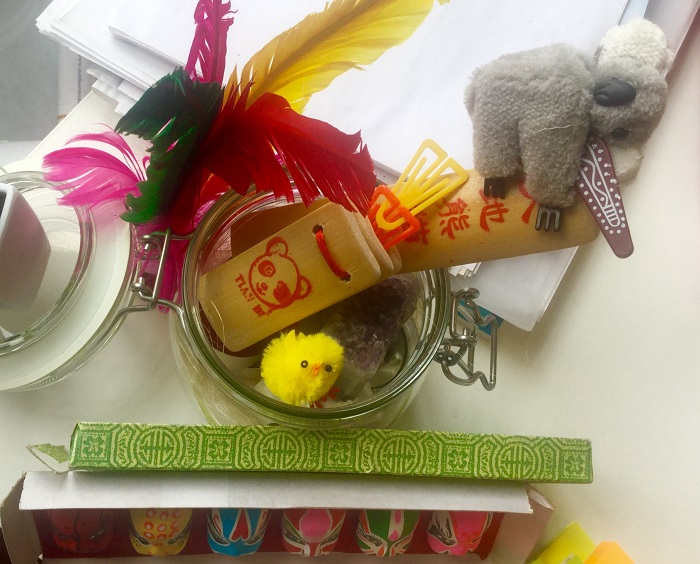
These are but a few examples. The truth is, we do not have to be magicians to make magic, and we do not have to do all of these things all of the time. Be that teacher who cares, is enthusiastic, is a risk-taker and who listens. Wear your magic cloak of non-conformity and work with, not for your learners. Paint your teaching with a pallet of variety and sparkle. Be a learning listener. To make a difference is to be that teacher. That teacher is you.
Want to receive cutting-edge insights from leading educators each week? Sign up to our Community Update and be part of the action!


